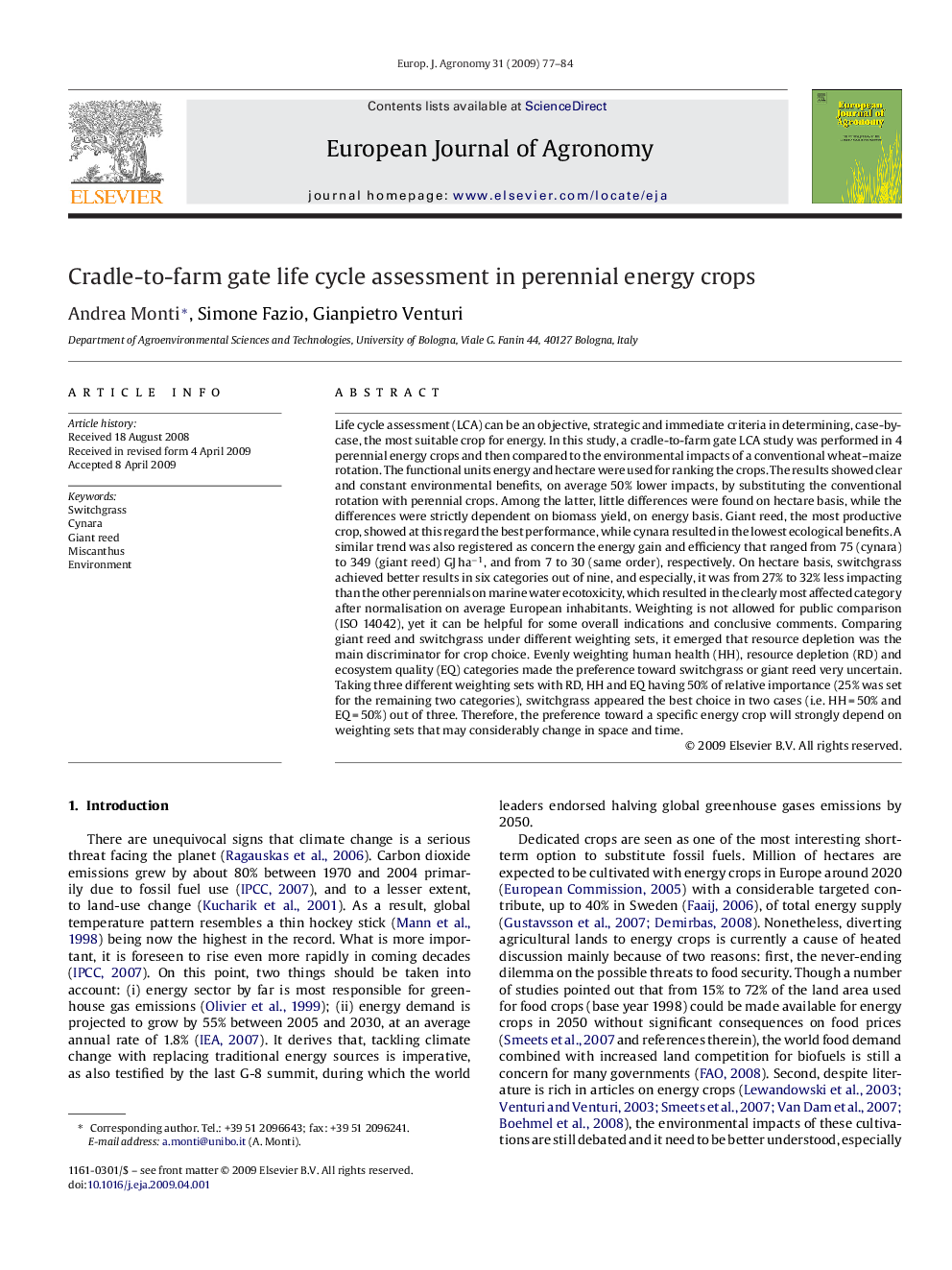| کد مقاله | کد نشریه | سال انتشار | مقاله انگلیسی | نسخه تمام متن |
|---|---|---|---|---|
| 4509424 | 1624509 | 2009 | 8 صفحه PDF | دانلود رایگان |

Life cycle assessment (LCA) can be an objective, strategic and immediate criteria in determining, case-by-case, the most suitable crop for energy. In this study, a cradle-to-farm gate LCA study was performed in 4 perennial energy crops and then compared to the environmental impacts of a conventional wheat–maize rotation. The functional units energy and hectare were used for ranking the crops. The results showed clear and constant environmental benefits, on average 50% lower impacts, by substituting the conventional rotation with perennial crops. Among the latter, little differences were found on hectare basis, while the differences were strictly dependent on biomass yield, on energy basis. Giant reed, the most productive crop, showed at this regard the best performance, while cynara resulted in the lowest ecological benefits. A similar trend was also registered as concern the energy gain and efficiency that ranged from 75 (cynara) to 349 (giant reed) GJ ha−1, and from 7 to 30 (same order), respectively. On hectare basis, switchgrass achieved better results in six categories out of nine, and especially, it was from 27% to 32% less impacting than the other perennials on marine water ecotoxicity, which resulted in the clearly most affected category after normalisation on average European inhabitants. Weighting is not allowed for public comparison (ISO 14042), yet it can be helpful for some overall indications and conclusive comments. Comparing giant reed and switchgrass under different weighting sets, it emerged that resource depletion was the main discriminator for crop choice. Evenly weighting human health (HH), resource depletion (RD) and ecosystem quality (EQ) categories made the preference toward switchgrass or giant reed very uncertain. Taking three different weighting sets with RD, HH and EQ having 50% of relative importance (25% was set for the remaining two categories), switchgrass appeared the best choice in two cases (i.e. HH = 50% and EQ = 50%) out of three. Therefore, the preference toward a specific energy crop will strongly depend on weighting sets that may considerably change in space and time.
Journal: European Journal of Agronomy - Volume 31, Issue 2, August 2009, Pages 77–84